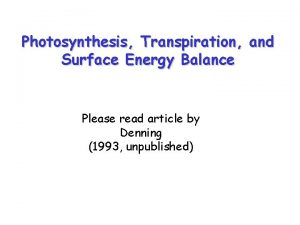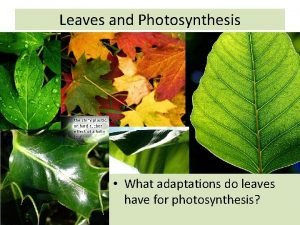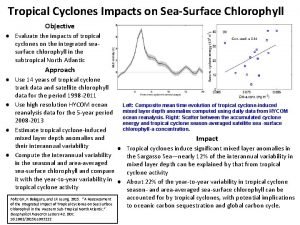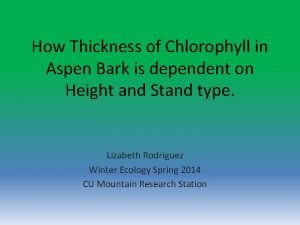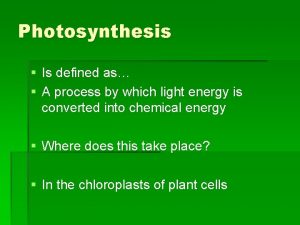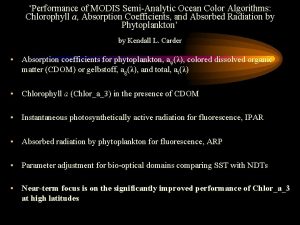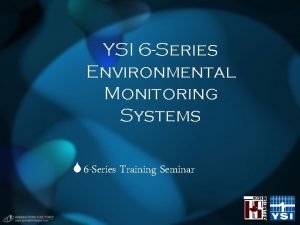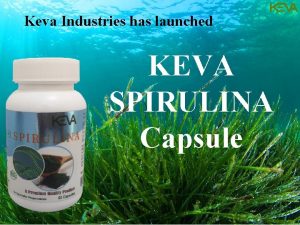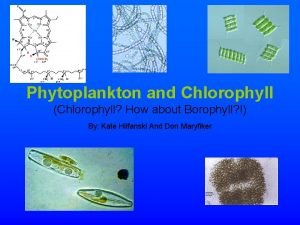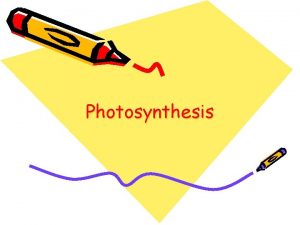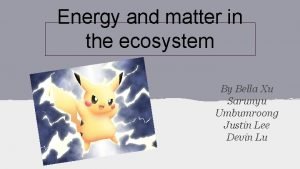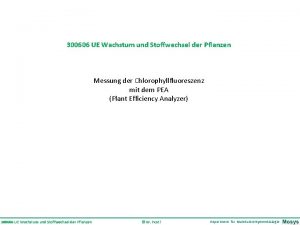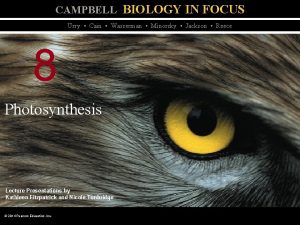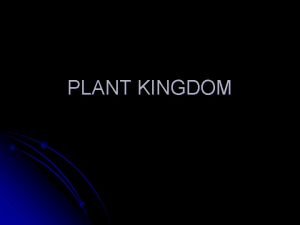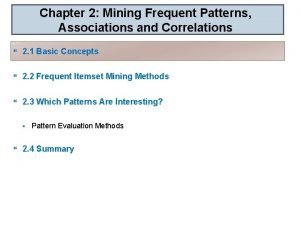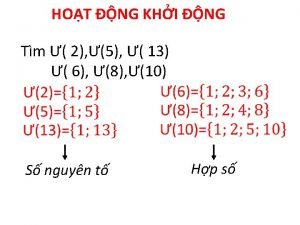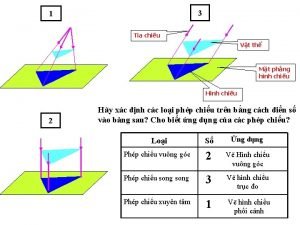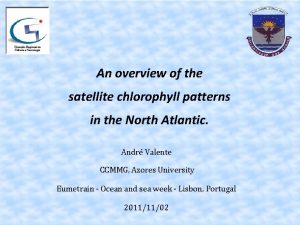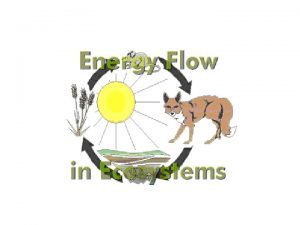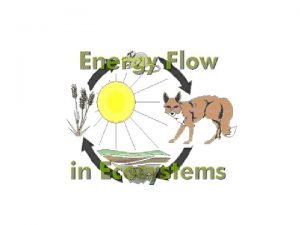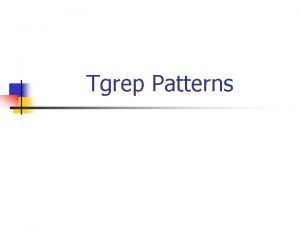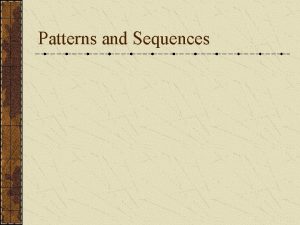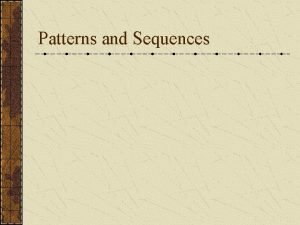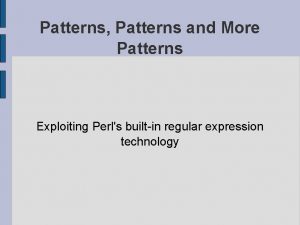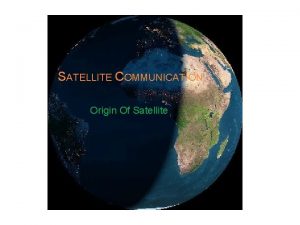An overview of the satellite chlorophyll patterns in







































- Slides: 39

An overview of the satellite chlorophyll patterns in the North Atlantic. André Valente CCMMG, Azores University Eumetrain - Ocean and sea week - Lisbon, Portugal 2011/11/02

My introduction Hello! My name is André! I am Ph. D student in the University of Azores.

Contents 1 – What is chlorophyll and why is it important? 2 – How can we measure chlorophyll from space? 3 – What can we do with the images? 4 - Important concepts. 5 – Chlorophyll patterns in the North Atlantic. - Large-scale. - Seasonal time-scale. - Interannual time-scales. - Shorter time-scales.

What is phytoplankton and chlorophyll? Phytoplankton are microscopic sea plants. They are the base of the marine food chain. Chlorophyll a is a pigment of phytoplankton. Is responsible for absorbing sunlight during photosynthesis. Zooplankton Chlorophyll a ~ Phytoplankton biomass ~ Primary productivity Phytoplankton

Why is phytoplankton important? Nutrients+Light Phytoplankton growth More food available! 1 - Supports almost all marine life. Zooplankton 2 - Half of the biological production on the planet. 3 - Key role in the global carbon cycle. Phytoplankton

How to measure chlorophyll from space? By measuring the “color” of the ocean! chlorophyll satellite images = ocean color images Hypothesis: chlorophyll is the only coloring agent in the water. Chlorophyll absorbs the “blue” radiation, so the higher the chlorophyll concentration, the lower is the “blue” water-leaving radiance Open ocean: Blue water – Low chlorophyll Green water – High chlorophyll The hypothesis fails in coastal waters (other coloring material)

How to measure chlorophyll from space? The sun emits electromagnetic radiation in the visible part of the spectrum. El et ro m sensor ag n et ic Ltraj Ra di AIR WATER at io n Lsup Lwat “ocean color”

Water leaving radiance (or ocean color) Water leaving radiance for different chl concentrations The higher the chlorophyll concentration, the lower is the “blue” radiance emerging from the water. Cchl ~ (Yoder and Kennelly, 2006) Lw(551 nm) Lw(443 nm)

What is like a chl satellite image? • Sensors: MODIS, Sea. Wi. FS, MERIS, etc • Spatial resolution: 1 km 2 • Temporal resolution: Daily • Since 1998 -present • Freely available. . It takes 100 min to make one orbit. About 15 orbits per day. The result is one image per day at the same time every day. The satellite passes every day around 14 pm above Lisbon.

What does a chl satellite image look like? 1 day composite (2009/05/29) . 7 day composite (all images 2009/05/25 - 2009/06/01) 1 month composite (all images 2009/05/01 - 2009/05/31)

So what can we do now? We have: Daily, high resolution, global images of chlorophyll patterns. Huge amount of data (since 1997. . . that gives around 5000 daily images). We can study plankton distribution in time and space: Identify large-scale and regional patterns. Determine seasonal and interannual cycles. Delineate ecological provinces. Determine trends (climate change). Using other environmental variables (currents, water masses, winds, tides, bathymetry, etc, ) we can identify the forcing mechanisms.

Important concepts: nutrients, light and mixing The biological pump Nutrients + Light Phytoplankton growth But nutrients and light are the inverse of one another: Nutrient increases with depth. Light decreases with depth (Levy et al, 2008) What brings nutrients to the euphotic zone?

Important concepts: supply of nutrients Ocean transport and mixing processes maintains the supply of nutrients from deep waters to surface waters. Other nutrient inputs: atmospheric deposition, river runoff in the coastal zone and nitrogen fixation.

Important concepts: supply of nutrients The spatial changes in phytoplankton abundance is the result of regional differences in the amount of nutrient fluxed into the euphotic zone. (Yentsch, 1989)

Important concepts: mixed layer depth (MLD) Feb May Aug Nov Mixed Layer Depth Climatology (de Boyer Montégut et al 2004)

Important concepts: mixed layer depth (MLD) MLD influences the rate of primary production by regulating the basic substrates: light and nutrients. 30 m 50 m 100 m 200 m 300 m Set Nov Jan Feb Mar 20 m May 50 m Jun 20 m Jul 10 m Aug 50 m Apr Winter storms deepen the mixed layer Warmer temperatures, weak winds and insulation shallows mixed layer

The physical supply of nutrients 1 - Large scale and time scale>1 year: Controlled by thermohaline and the wind-driven circulations. These circulations regulate the subsurface nutrient distribution. 2 - Seasonal time-scale: Modulated by winter mixing and stratification. 3 – Interannual time-scale: Variations in winter mixing and stratification. 4 - Shorter time scales: Controled by mesoscale eddies (10 -100 km) and submesoscale features such as fronts and filaments (~1 -10 km).

Large scale and time scale>1 year Annual chl mean for 1998 Different surface chlorophyll patterns and therefore productivity. Where?

Large scale and time scale>1 year Annual chl mean for 1998 Subpolar Gyre Coastal waters Subtropical Gyre Coastal upwelling Different surface chlorophyll patterns and therefore productivity. Why?

Large scale and time scale>1 year Annual chl mean for 1998 Coastal waters: More productive than open ocean. Nutrient supply from rivers and anthropogenic nutrient inputs. Upwelling of nutrients from tidal mixing in the shelf But be careful. . . the chl algorihm was not designed for coastal waters. Mineral sediments tipically induce erroneously high satellite-derived chl.

Large scale and time scale>1 year Annual chl mean for 1998 Coastal upwelling: Eastern boundaries Winds induce the upwelling of deeper cold, nutrient-rich waters. Very productive regions.

Large scale and time scale>1 year Annual chl mean for 1998 Subpolar gyre: High productivity. Strong seasonal blooms of phytoplankton. Subtropical gyre: Low productivity. Weak seasonal blooms of phytoplankton. http: //web. me. com/uriarte/Earths_Climate/Appendix_4. _Ocean_currents. html

Why the difference in productivity between gyres? 1 – Different nutricline depths (Znitrate>1 m. Mol/m 3) Surface winds drive double-gyre systems and thermocline differences. Subpolar gyre: cyclonic circulation, upwelling and a raised thermocline. Subtropical gyre: anticyclonic circulation, downwelling and a depressed thermocline. (Williams and Follows, 2003)

Why the difference in productivity between gyres? 1 – Different nutricline depths (Znitrate>1 m. Mol/m 3) In the subpolar gyre thermocline light and the nutricline is closer to the surface. There are more nutrients available and the potential for higher productivity is greater. WOA nitrate August climatology (m. MOL/m 3).

Why the difference in productivity between gyres? 2 – Different winter mixing mld light Subpolar gyre: Strong winter mixing (mixed layer depths >200 m) Subtropical gyre: Weak winter mixing (mixed layer depths ~ 100 m) WOA nitrate August climatology (m. MOL/m 3) and WOA mixed layer depth March climatology.

Why the difference in productivity between gyres? Subtropical gyre: Subpolar gyre: Deeper nutricline Shallow nutricline Weak winter mixing Strong winter mixing Nutrient limited Nutrient abundant Light abundant. Light can be limiting

Seasonal time-scale Satellite Chlorophyll Climatology 1998 -2007 The vernal, or spring, bloom. Feb May A feature of many seasonal seas in the global ocean. The most famous is the spring bloom of the North Atlantic, clearly detectable from space. Aug Nov

Seasonal time-scale The seasonality is mainly driven by variations in the mixed layer depth. Levy et al, 2005 Maximum MLDs ~ 100 m Weak bloom in winter Nutrient limited Maximum MLDs > 200 m Strong bloom in spring

Seasonal time-scale Chl March 2007 Chl April 2007 Circles are ARGO floaters. The color is the mixed layer depth (0 -400 m) Wherever MLD's are greater than 200 m, chlorophyll is low. Why? MLD's shallow to 100 m (due to surface warming), and the spring bloom begins. Why?

Seasonal time-scale Critical Depth Hypothesis formalized by Sverdrup in 1953 (and almost always used) For a spring bloom to occur the MLD must be shallower than a certain critical depth (Zc). For MLD>Zc production is inhibited, the cells are being continuously mixed below the euphotic layer for periods greater than their doubling time. Henson et al, 2006

Seasonal time-scale Why does MLD shallows? Qnet>0, ocean gains heat - warmer air temperatures - weaks winds - solar heating MLD shallowing and Chl increase

Seasonal time-scale Bloom timing: A northward propagating front of chlorophyll. Follows and Dutkiewicz, 2002

Seasonal time-scale Subpolar region: the bloom is more intense where greatest heat input favours restratification. Subtropical region: the bloom is intensified where there is greater surface heat loss and wind mixing, consistent with nutrient limitation. Follows and Dutkiewicz, 2002

Interannual time-scale Interannual variability in winter-time convection and the corresponding influence on the supply of nitrate to the euphotic zone and the response in primary production (BATS). (Williams and Follows, 2003)

Interannual time-scale Interannual variability in the timing of the spring bloom due to the variation in wind mixing, linked to NAO positive – NAO negative NAO positive NAO negative Follows and Dutkiewicz, 2002 Henson et al, 2009

Shorter time-scales Lehahn et al, 2007 (Williams and Follows, 2003) Controled by mesoscale eddies (10 -100 km) and submesoscale features such as fronts and filaments (~1 -10 km).

The physical regime of the oceans dictates the phytoplankton distributions and hence primary production in the oceans; the forces involved are those associated with the sun's heating and cooling, which drives the ocean's circulation. (Yentsch, 1989)

Thank You!!

References: de Boyer Montégut, C. , G. Madec, A. S. Fischer, A. Lazar, and D. Iudicone (2004), Mixed layer depth over the global ocean: an examination of profile data and a profile-based climatology, J. Geophys. Res. , 109, C 12003, doi: 10. 1029/2004 JC 002378. Follows, M. , Dutkiewicz, S. , 2002. Meterological modulation of the North Atlantic spring bloom. Deep-Sea Research II 49, 321– 344. Henson, S. A. , I. Robinson, J. T. Allen, and J. J. Waniek (2006), Effect of meteorological conditions on interannual variability in timing and magnitude of the spring bloom in the Irminger Basin, North Atlantic, Deep. Sea Res. , Part I, 53, 1601– 1615, doi: 10. 1016/j. dsr. 2006. 07. 009. Henson, S. A. , J. P. Dunne, and J. L. Sarmiento (2009), Decadal variability in North Atlantic phytoplankton blooms, J. Geophys. Res. , 114, C 04013, doi: 10. 1029/2008 JC 005139. Lehahn, Y. , F. d'Ovidio, M. Lévy and E. Heitzel (2007). Stirring of the Northeast Atlantic spring bloom: a lagrangian analysis based on multi-satellite data, J. Geophys. Res. , 112, C 08005, doi: 10. 1029/2006 JC 003927 Lévy, M. , Y. Lehahn, J. -M. André, L. Mémery, H. Loisel, and E. Heifetz (2005). Production regimes in the Northeast Atlantic : a study based on Sea. Wi. FS chlorophyll and OGCM mixed-layer depth, J. Geophys. Res. , Vol. 110, No. C 7, C 07 S 10, doi: 10. 1029/2004 JC 00277 Lévy, M. (2008). The modulation of biological production by oceanic mesoscal turbulence, Lect. Notes Phys. , 744, 219 -261, DOI 10. 1007/978 -3 -540 -75215 -8_9, Transport in Geophysical flow: Ten years after, J. B. Weiss and A. Provenzale (Eds), Springler Williams R. G. and M. J. Follows (2003), Physical transport of nutrients and the maintenance of biological production. In : Ocean Biogeochemistry : a JGOFS synthesis, ed by Springer Yentsch C. S. (1989), AN OVERVIEW OF MESOSCALES DISTRIBUTION OF OCEAN COLOR IN THE NORTH ATLANTIC Adv. Space Res. Vol. 9, No. 7, pp. (7)435 -(7)442, 1989 Yoder, J. A. , and M. A. Kennelly, 2006. What have we learned about ocean variability from satellite ocean color imagers? Oceanography, 19(1), 152 -171
 Chlorophyll structure
Chlorophyll structure What are the raw materials for photosynthesis
What are the raw materials for photosynthesis Chlorophyll borophyll
Chlorophyll borophyll Living together video
Living together video Aspen chlorophyll
Aspen chlorophyll What is chlorophyll
What is chlorophyll Chlorophyll
Chlorophyll Bloody chlorophyll
Bloody chlorophyll Photosynthesis chlorophyll
Photosynthesis chlorophyll Chlorophyll biology definition
Chlorophyll biology definition Sonde maintenance
Sonde maintenance Beechdrops are leafless plants that lack chlorophyll
Beechdrops are leafless plants that lack chlorophyll Chlorophyll
Chlorophyll Ysi 600 oms
Ysi 600 oms Keva spirulina
Keva spirulina Borophyll
Borophyll Photosynthesis takes place in
Photosynthesis takes place in Types of chlorophyll
Types of chlorophyll Kautsky kurve
Kautsky kurve When a chlorophyll molecule absorbs light,
When a chlorophyll molecule absorbs light, Algae are chlorophyll bearing
Algae are chlorophyll bearing Obj dating
Obj dating Mining frequent patterns associations and correlations
Mining frequent patterns associations and correlations Trời xanh đây là của chúng ta thể thơ
Trời xanh đây là của chúng ta thể thơ Các số nguyên tố là gì
Các số nguyên tố là gì Tia chieu sa te
Tia chieu sa te Các châu lục và đại dương trên thế giới
Các châu lục và đại dương trên thế giới Chụp tư thế worms-breton
Chụp tư thế worms-breton Thế nào là hệ số cao nhất
Thế nào là hệ số cao nhất ưu thế lai là gì
ưu thế lai là gì Hệ hô hấp
Hệ hô hấp Tư thế ngồi viết
Tư thế ngồi viết Cái miệng nó xinh thế
Cái miệng nó xinh thế đặc điểm cơ thể của người tối cổ
đặc điểm cơ thể của người tối cổ Mật thư anh em như thể tay chân
Mật thư anh em như thể tay chân Bổ thể
Bổ thể Tư thế ngồi viết
Tư thế ngồi viết Thẻ vin
Thẻ vin Thơ thất ngôn tứ tuyệt đường luật
Thơ thất ngôn tứ tuyệt đường luật
